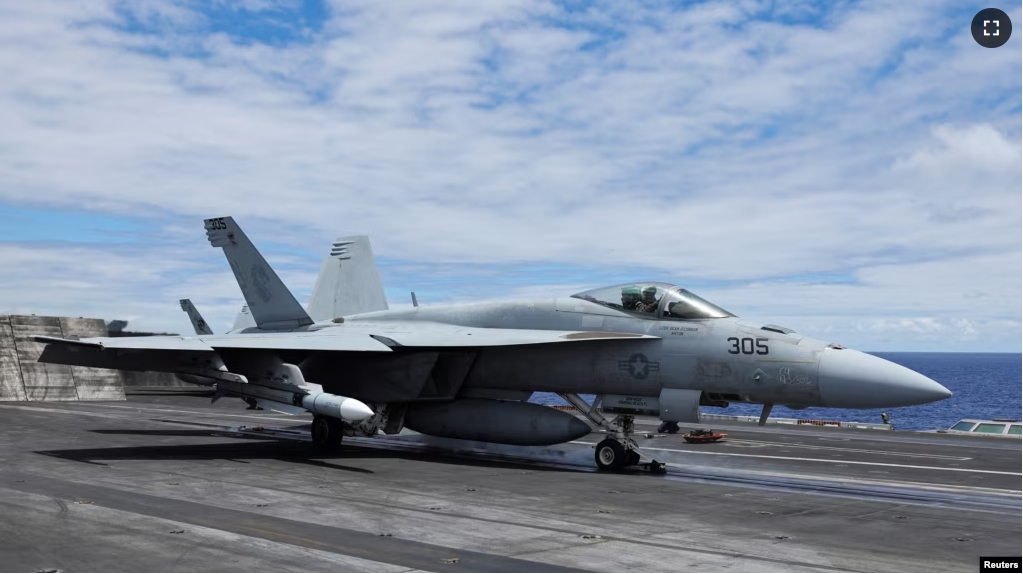The United States Navy has recently deployed new long-range air-to-air missiles in the Indo-Pacific area. The move could take away China’s lead in the area, experts say.
The AIM-174B is the longest-range air-to-air missile the U.S. has ever fielded. Its deployment was officially acknowledged in July.
The AIM-174B can fly several times farther than the next-best U.S. missile, the AIM-120. The AIM-174B does not require new production lines to manufacture and it works with the aircraft of at least one ally, Australia.
Missiles can attack long-distance targets
The AIM-174B, which can attack aerial targets as far away as 400 kilometers, has a longer range than China’s PL-15 missile. The greater range permits U.S. jets to keep threats farther from aircraft carriers. The missile can also safely strike “high-value” targets, such as command-and-control planes, from a greater distance.

Chieh Chung is a researcher at the Association of Strategic Foresight, a Taipei-based research group. Chung said, “The United States can ensure the safety of their important assets, such as carrier groups, and launch long-range strikes on PLA targets.” PLA stands for People’s Liberation Army, China’s military force.
The existing long-range missile for U.S. aircraft, the AIM-120, has a top range of about 150 km. Such a range requires the launching aircraft to fly deeper into disputed territory. As a result, aircraft carriers are at greater risk of anti-ship attacks.
Any kind of conflict in the area means the U.S. Navy would have to operate within a few hundred kilometers of its Chinese adversary. Supporting Taiwan in an invasion would pull the Navy in even closer.
The AIM-174B changes that situation. A senior U.S. defense technical expert told Reuters, “The big thing is that it lets the United States push in a little bit further” into the South China Sea during a conflict. The expert who declined to be named added, “And it’s going to potentially change Chinese behavior because it’s going to hold large, slow… aircraft at greater risk.”
The AIM-174B uses Raytheon’s SM-6 missile design. Raytheon declined to comment on how many AIM-174Bs would be produced or if existing SM-6s would be converted.
The new AIM-174Bs have been shown on U.S. Navy F/A-18E/F Super Hornet aircraft, which are operated by both American and Australian militaries.
Australia’s defense ministry said it “works closely with the U.S. to understand capability options available for Australian consideration.”
The U.S. Navy said the missile was “operationally deployed.” But it declined to comment on whether the AIM-174B would be supplied to allies, whether the AIM-174B would be put onto other aircraft, and how many AIM-174Bs it wanted each year.
I’m John Russell.
Gerry Doyle reported on this story for Reuters. John Russell adapted it for VOA Learning English.
_______________________________________________
Words in This Story
range — n. the space included or covered; the distance between possible extremes
asset – n. something useful in an effort to defeat an enemy; a piece of military equipment
potentially – adv. In a possible state or condition
convert – v. to change from one form or function to another
option — n. something that may be chosen, such as an alternative course of action
